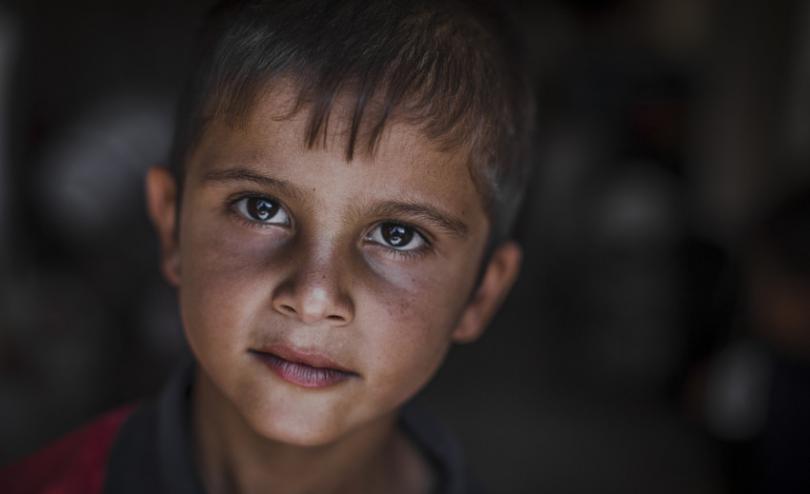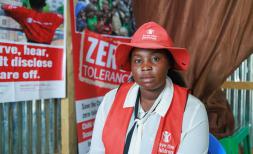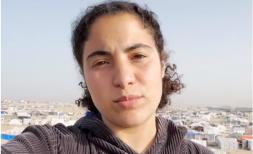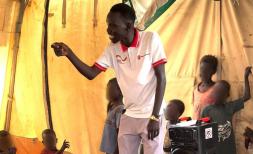The UN 2030 goals mean little if we can't fix the refugee crisis

Originally published on New Statesman
A year ago this week, world leaders adopted an ambitious set of targets to end poverty, fix climate change and tackle inequalities by 2030. All of us who supported the global goals pledged to make them famous, and mobilise an unprecedented coalition of government, business and civil society behind their achievement. Never before has a set of UN goals been launched with such fanfare, or been met with such broad support.
But the first year of the global goals has been chequered. Plans to translate ambition into action at the national level have been slow to materialise. There are still questions about how governments will be held accountable for the goals. And most fundamentally, at the current rate of progress the targets will be missed, and with failure we will let down a generation of children.
We should not underestimate the scale of the challenge in front of us. A recent report by the Overseas Development Institute found that we risk missing every one of the 17 goals. Without concerted action, the goals risk becoming an infamous failure, rather than a famous success. We need to get to work.
Over this week, leaders will meet in New York at the United Nations General Assembly. We must use this meeting to decide how we can have the most impact for children across the world. The 17 targets could be a springboard for dramatic improvements in the lives of children, regardless of who they are or where they live.
It is the most vulnerable, excluded or marginalised who desperately need the kind of radical change envisioned in the global goals – children that are denied the right to survive, learn and be protected simply because of who they are or where they live. Unfortunately, they are also the ones falling the furthest behind in terms of education, child marriage, health and other key outcomes.
At the current glacial rate of change, the goals will not be met for half a century. Meeting the goals will not be easy. A rapid change of pace is required through relentless focus, additional resources, and tough political choices.
The fourth goal promised all children a good quality education by 2030. Without faster progress, the world is set to live through another century of wasted potential with serious consequences for the global economy. At the current rate of improvement, over two thirds of children living in low income countries in 2030 will not have basic primary level skills. As well as depriving these children of the opportunities and better future they desperately want, this also starves their country’s economic development; $1 invested in an additional year of schooling generates ten times as much in economic benefits.
That any children are unable to access enough food to survive and thrive should shame us in the 21st century, and the second goal pledged to end hunger. Despite this promise to eliminate all forms of malnutrition in 15 years, without a dramatic change in course, by 2030 there will still be over a hundred million stunted children – that’s the population of Vietnam.

The pledge of goal five to end gender inequality offered to open doors for girls across the globe. Achieving this will only happen if we tackle all harmful practices that end a girl's safe childhood. This means ending abuse, exploitation, and trafficking, as well as female genital mutilation and child marriage. But at this rate we won't come close to meeting the 2030 goal. That's because these practices are rooted in gender discrimination and inequality. Unlocking a girl's potential must address these issues. Child marriage, for example, triggers a cycle of disadvantage - denying a girl her education, increasing the likelihood that the girl will live in poverty, be exposed to HIV and other sexually transmitted diseases, and experience violence.
I know from first-hand experience the pressures faced by governments in pursuing ambitious reforms. Difficult choices often need to be made, and will attract criticism. But it’s also the case that support from the international community can give real impetus to those efforts. The international community has a critical role to play at moments like the UN General Assembly in reminding the world of the commitments that have been made, gauging progress, and sharing experiences of what does and does not work. Some of the early initiatives that have sprung from the global goals, whether it’s the Education Financing Commission led by Gordon Brown, or the UN strategy for women’s and children’s health, Every Woman Every Child, are promising examples of how to complement national efforts with global support and need to be sustained.

We need to ensure that lessons are learned from the previous generation of targets, the Millennium Development Goals. The first 15 years of this century witnessed great strides for children. But it’s also the case that millions of the most marginalised children were left behind. We will not meet the new goals unless we tackle the specific obstacles faced by the most excluded children, whether they are children displaced from their homes by war and disaster, or children facing corrosive discrimination because of their gender, disability or ethnicity. This can only happen through a two pronged strategy, of challenging and changing people’s attitudes and behaviour, at the same time that governments pursue the changes in policies and budgets needed to expand opportunities.
Before we even begin to work towards the global goals, we’re off to a false start unless we address the refugee crisis. Imagining all of the world’s 65m displaced people as citizens of one country is a good way to understand the scale of this challenge. These people would make up the world’s 21st largest country by population. This country would rank fourth to last in terms of primary school attendance and we would lose far too many children to diseases we could have prevented. It would also be a country with one of the highest rates of child marriage.

We have 14 years left to achieve the goals we set ourselves last year – less than the span of a childhood. We know our final destination. Now, we need a clear map of how we will get there, and to embark on that journey, making full use of the tools in our arsenal, including knowledge, finance, technology and committed people. If last year’s gathering in New York was about commitment, this year’s general assembly must kick-start the long, hard job of delivery.







